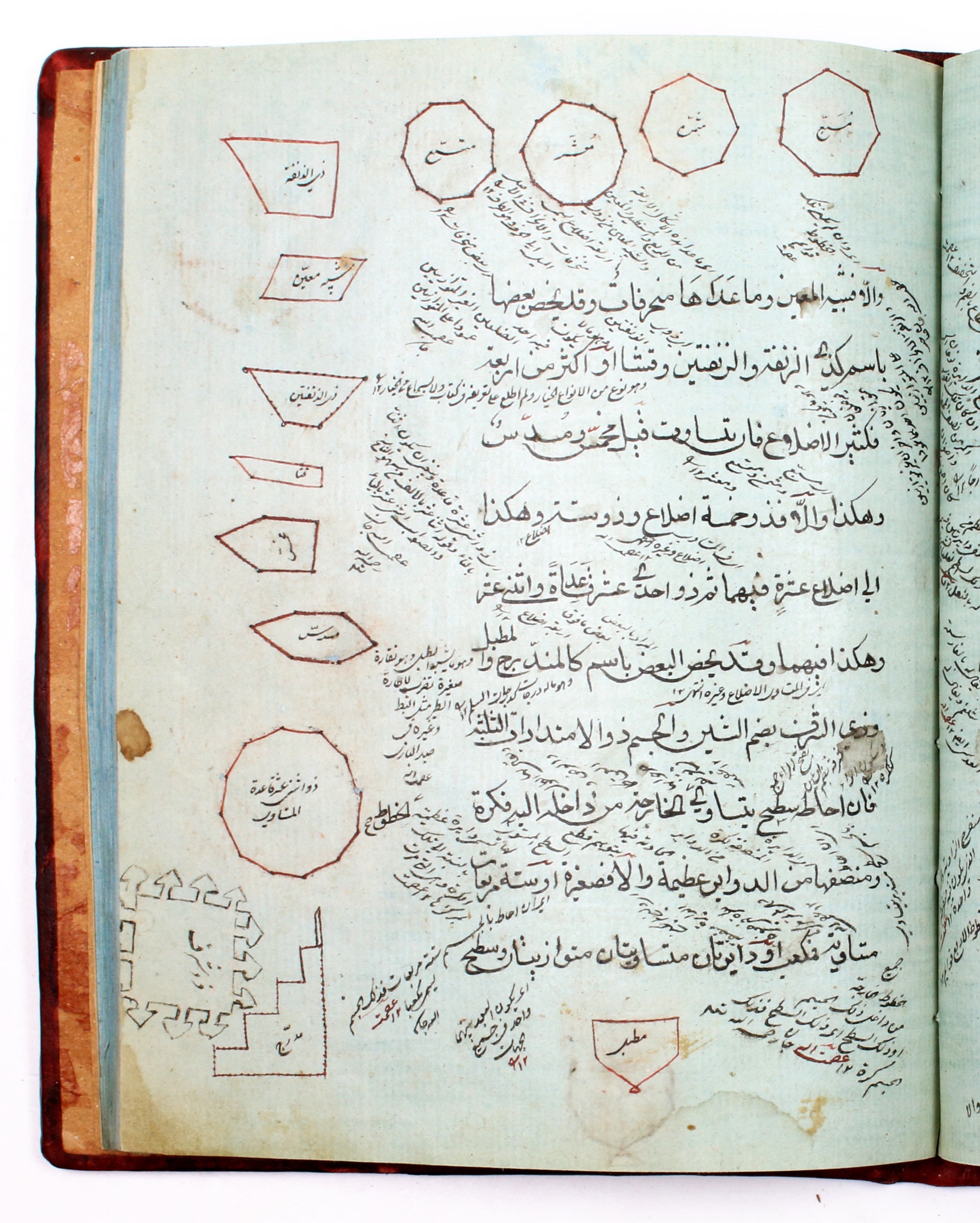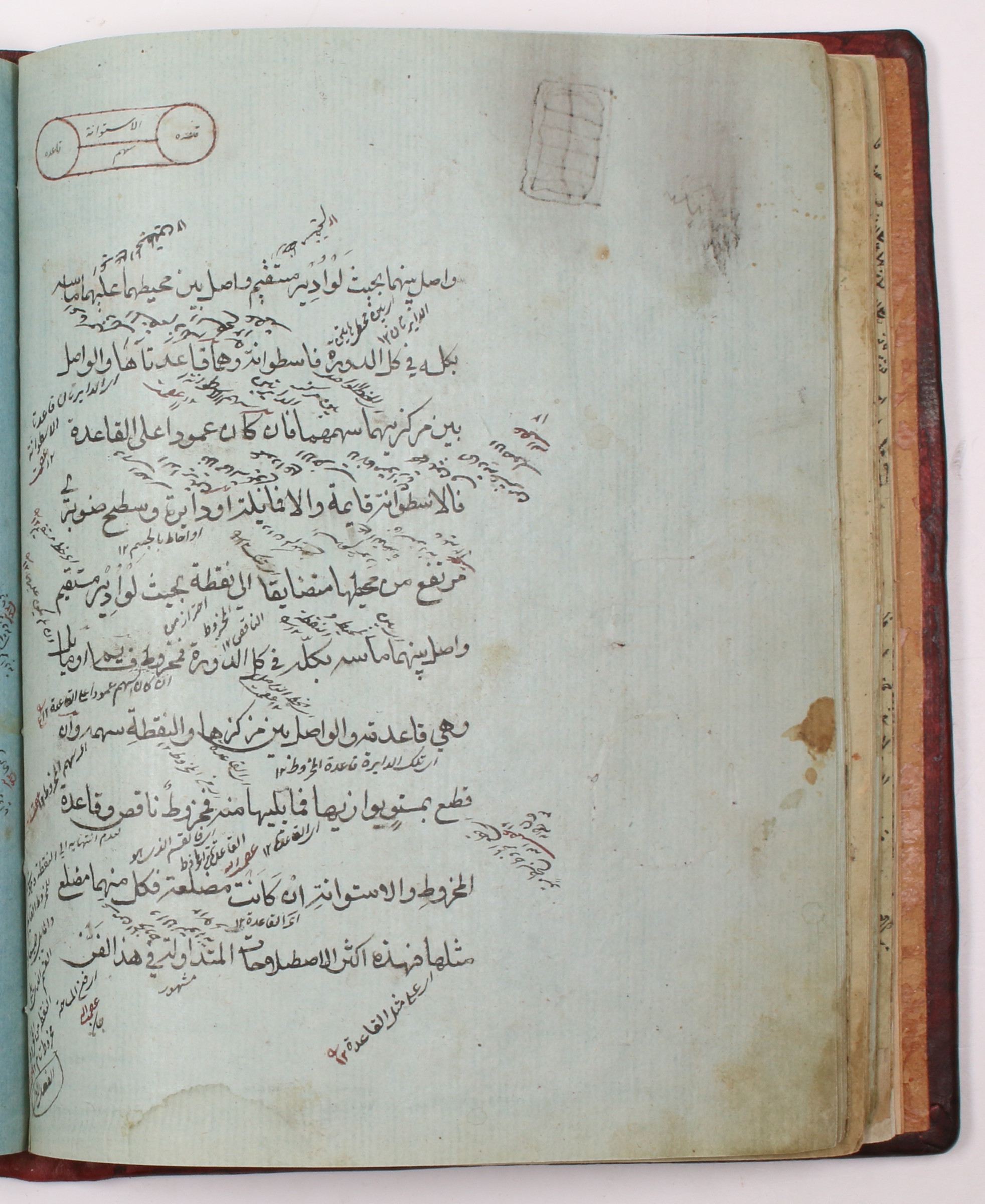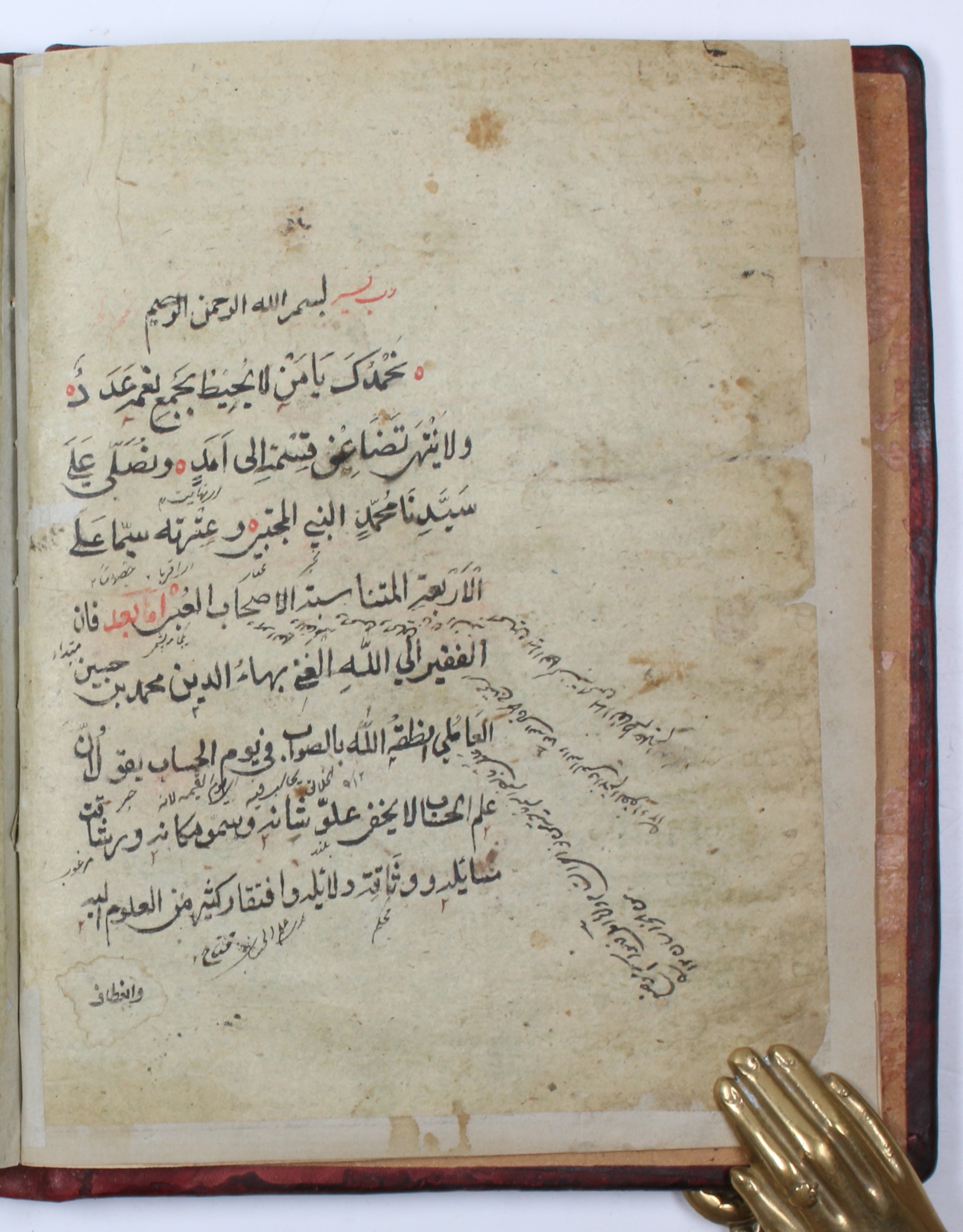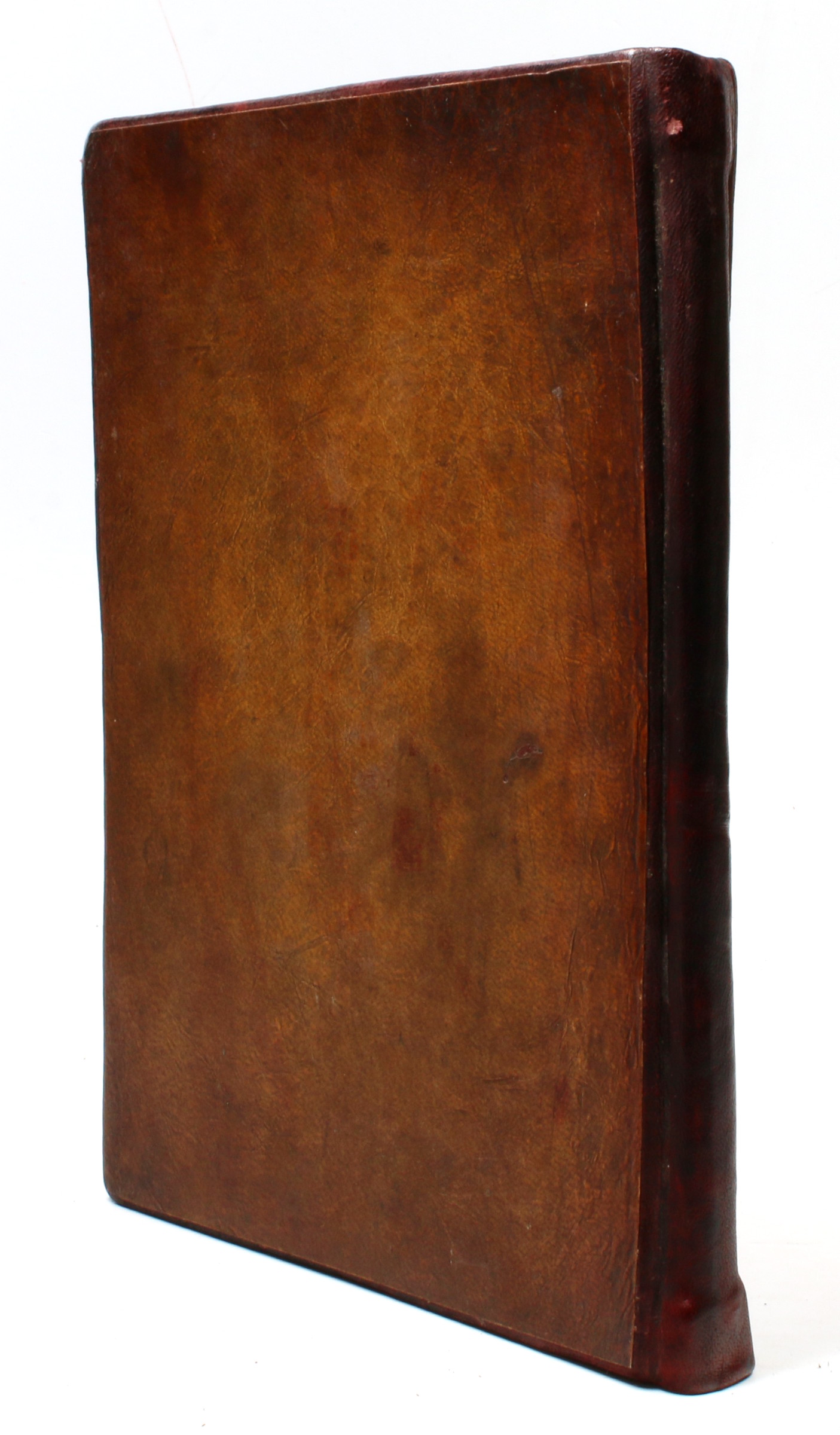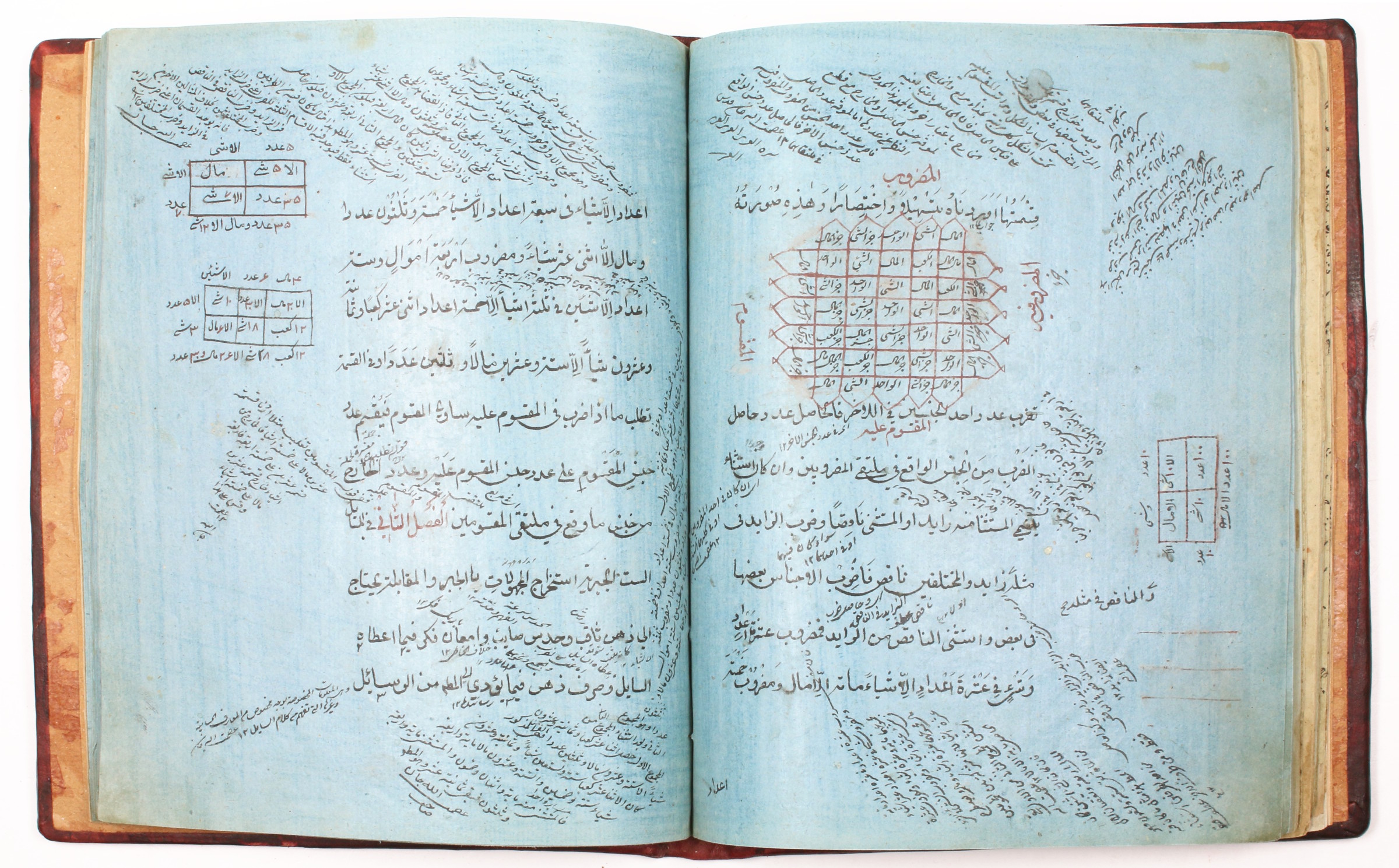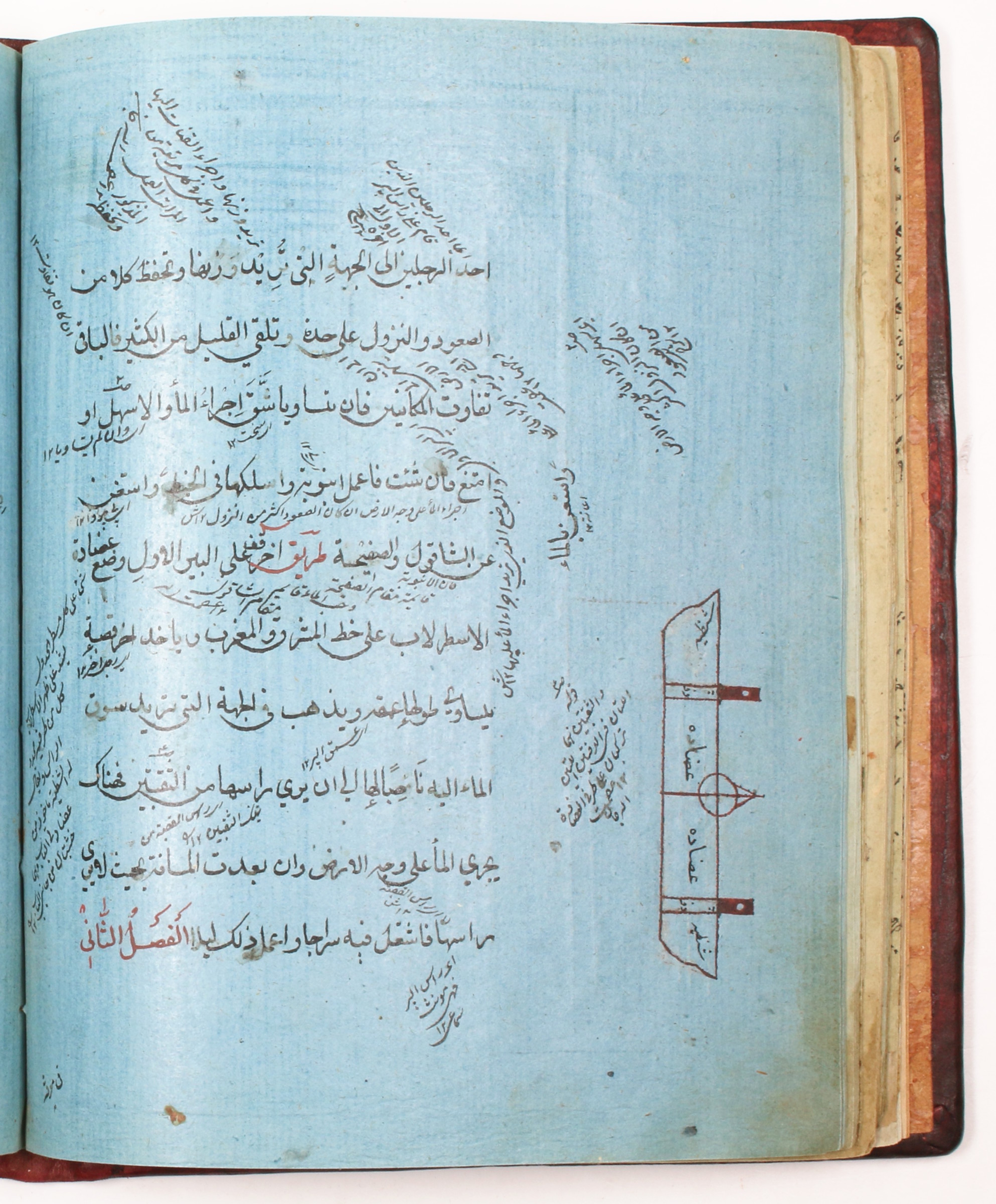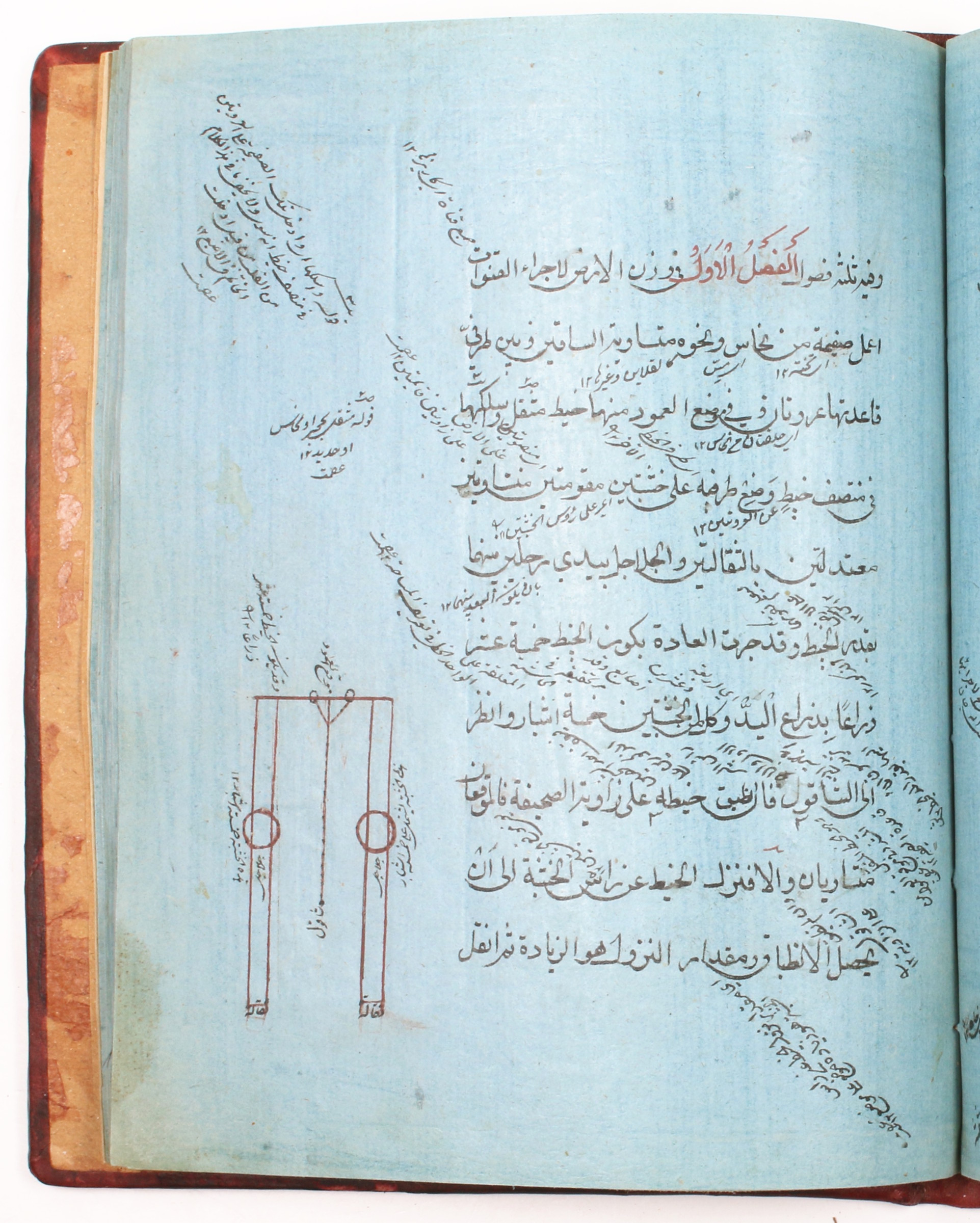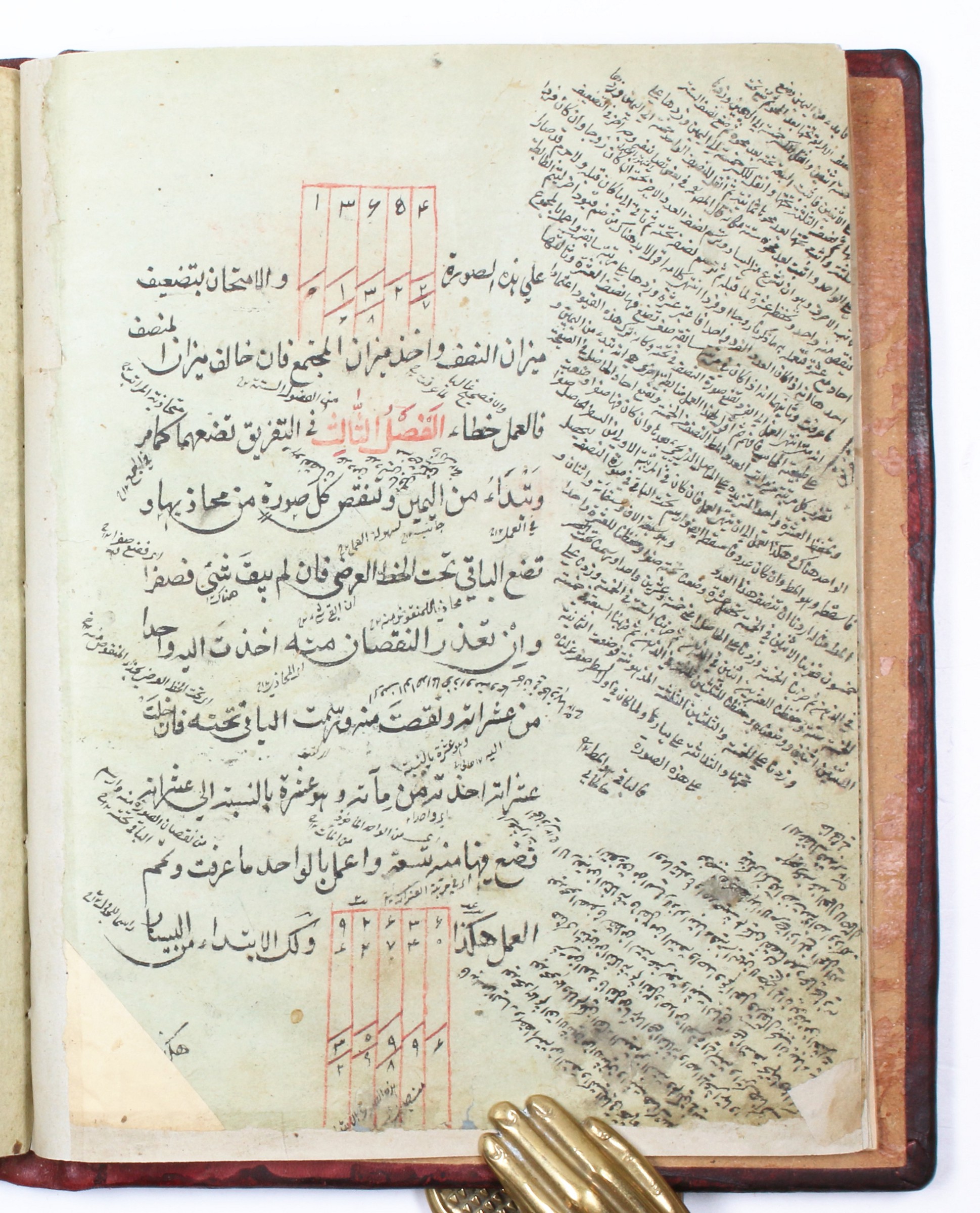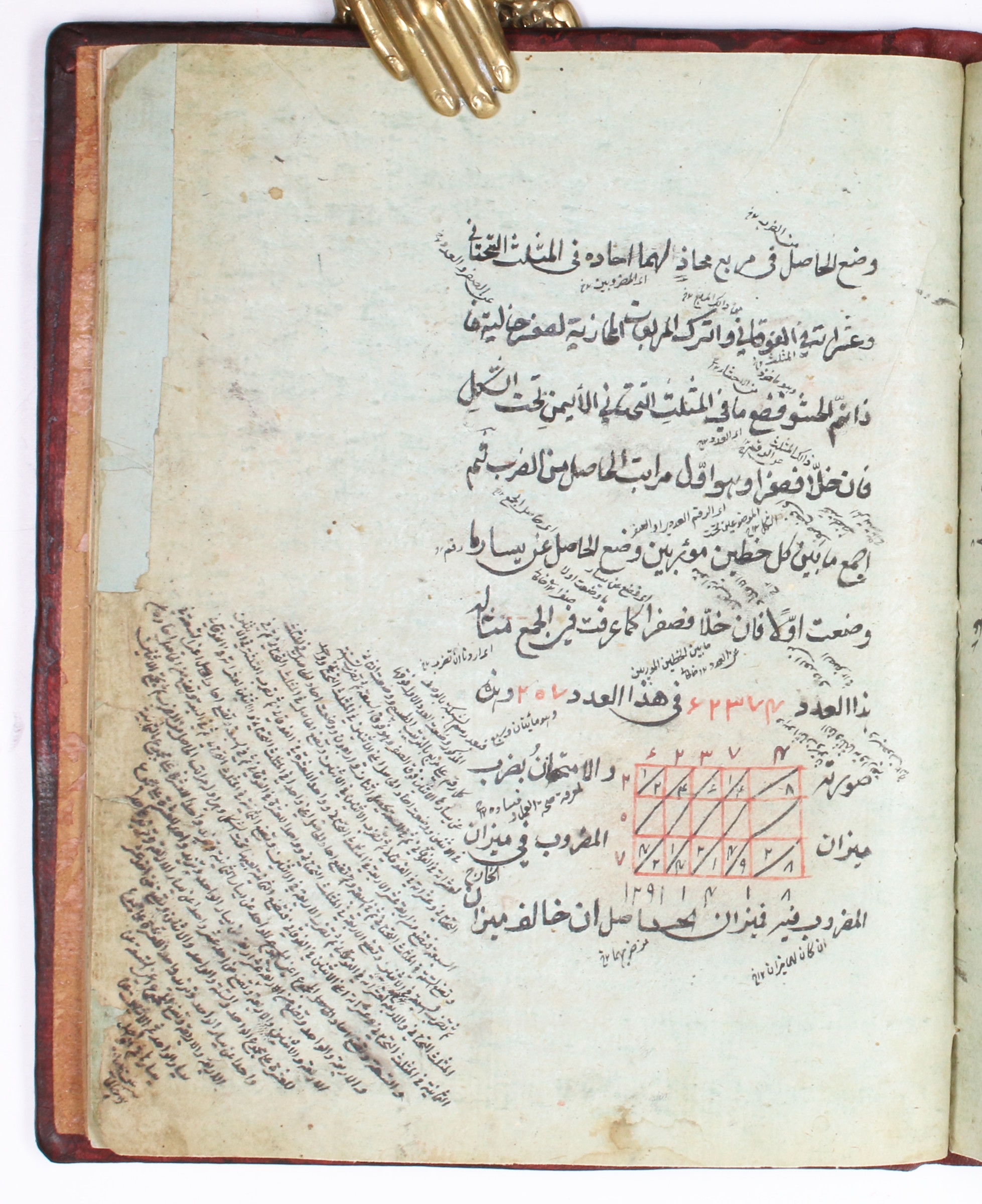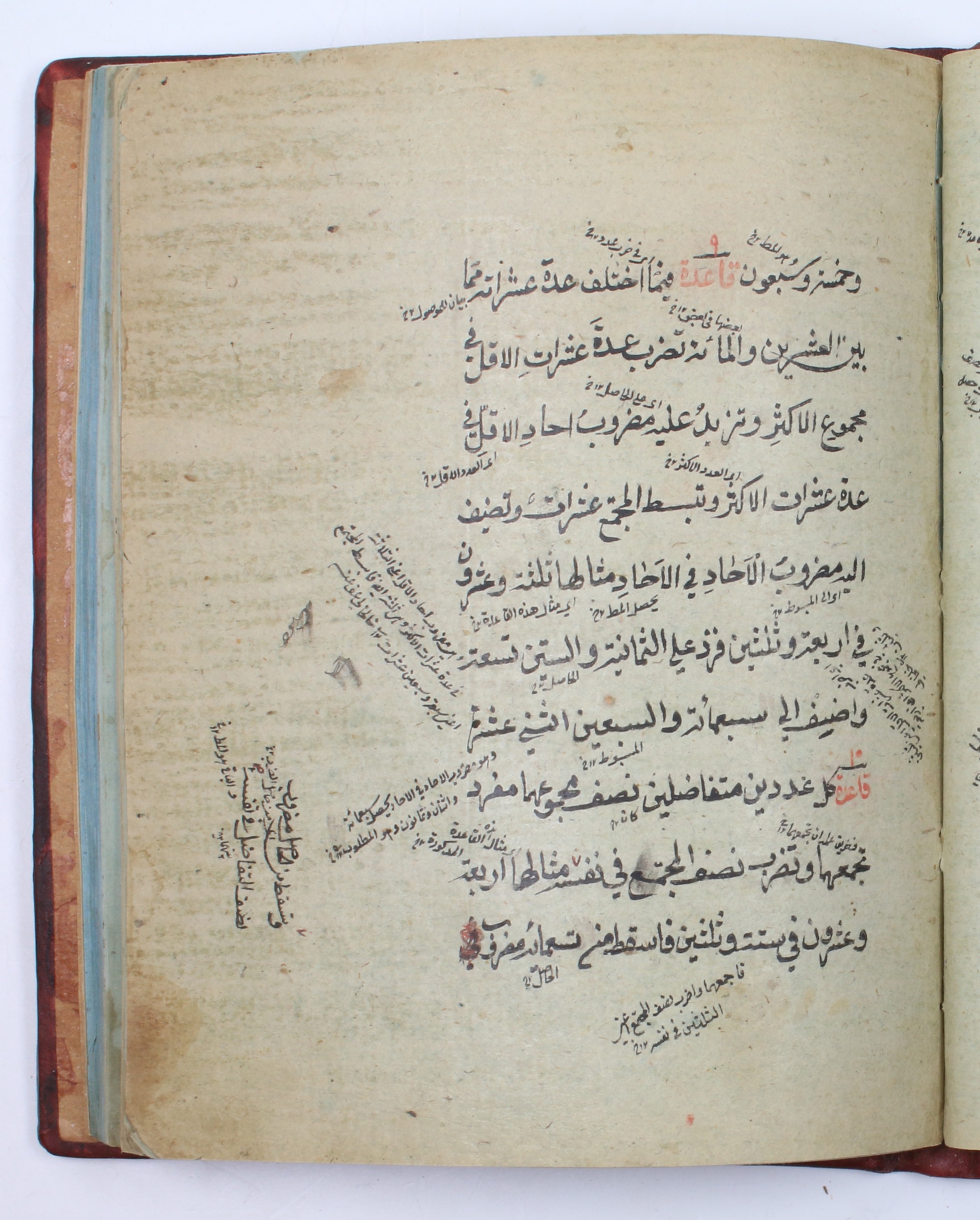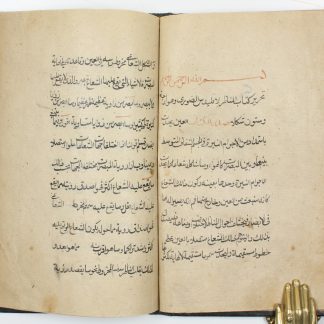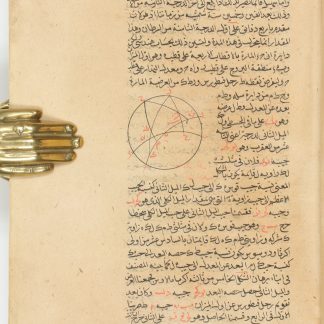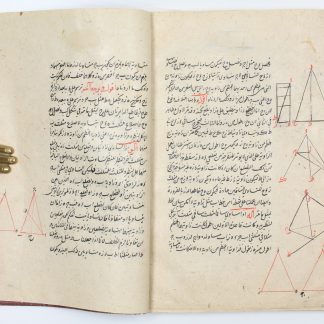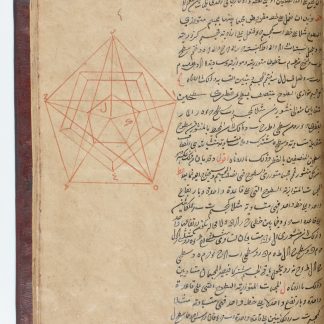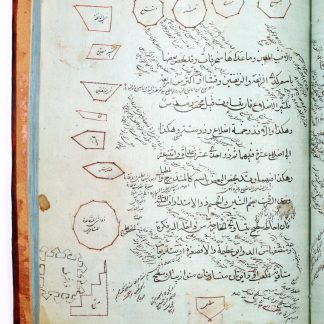Geometrical diagrams on blue-dyed paper
Khulasat al-hisab [Summa of Arithmetic].
4to (180 x 222 mm). 46 ff. Arabic and Persian manuscript on bluish paper. Black naskh script with tidy Persian nasta'liq in the margins and between lines of Arabic. Important words and phrases in Arabic picked out in red. Numerous diagrams: charts, both full-page, in-text, and marginal, in red and black. Modern full red morocco with contemporary leather laid down.
€ 9,500.00
A remarkably beautiful mathematics treatise on blue dyed paper with prolific diagrams in black and red, comprising one of the important and little-studied scientific manuscripts by Sufi polymath Baha al-Din al-Amili (1547-1621). Born in present-day Lebanon, Bahaddin emigrated to Safavid Persia with his family as a child after the execution of his father's mentor. Having settled in Isfahan, sources are divided on whether he travelled with his father on following journeys, as his father certainly undertook the Hajj and spent much time in Bahrain. Regardless of whether Bahaddin was present or remained in Isfahan, he was certainly part of a wide and constantly moving Muslim intellectual milieu. His achievements include co-founding the famous School of Isfahan and his status as one of the very few pre-Copernican scholars to suggest the possibility of the rotation of the spherical planet Earth in space. Despite this, scholarship has so far been limited on his scientific output, including that of the "Sum of Arithmetic" (or "Quintessence of Calculation"), which was not published until a German translation in the 19th century.
Particularly striking in this manuscript is its dyed paper, partly in a greenish hue but mostly in a deep sky blue, which provides a beautiful background for a lively discussion between Arabic text and Persian glosses, complete with numerous diagrams. A few figures have been carefully scraped away or altered, and some comprise quick sketches to illustrate a point, while others are carefully executed and take up a full page. Certainly, this was a working text, and not simply for show, but the juxtaposition of margins crowded with red and black geometric shapes, elegant script, and fine dyed paper makes for a remarkable manuscript as both a decorative object and an intellectual tool.
Rebacked; interior with occasional minor soiling. Altogether quite well preserved.

